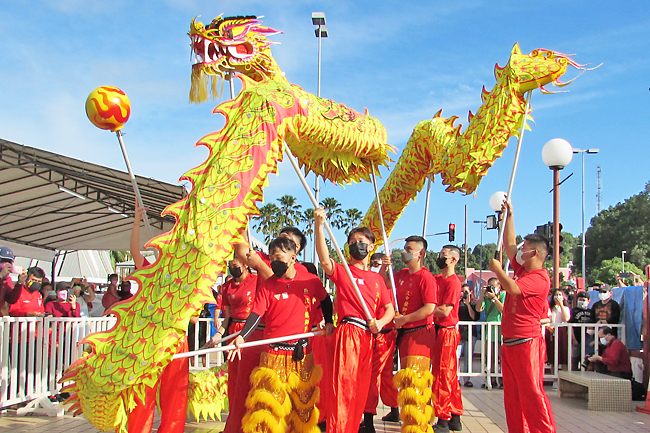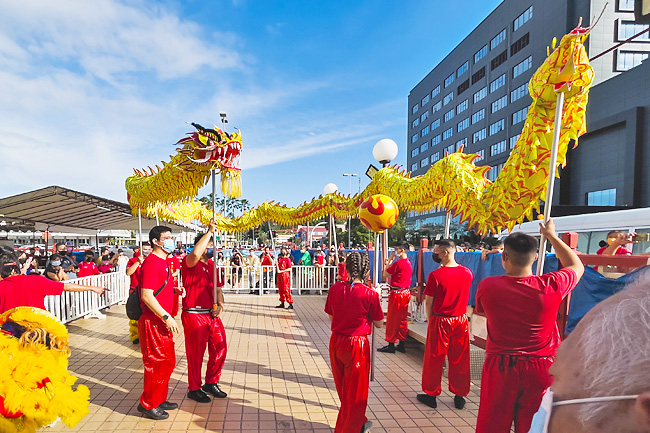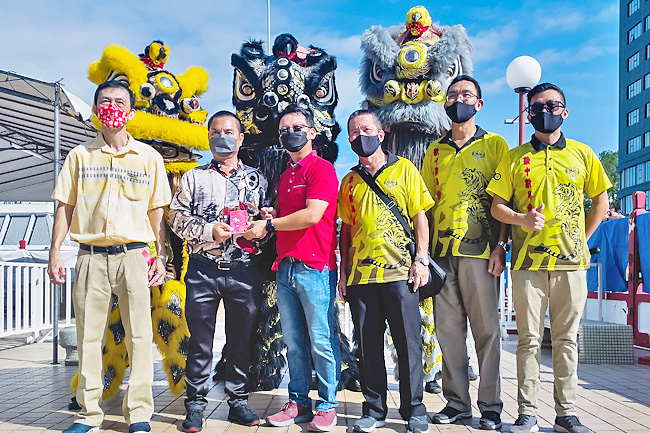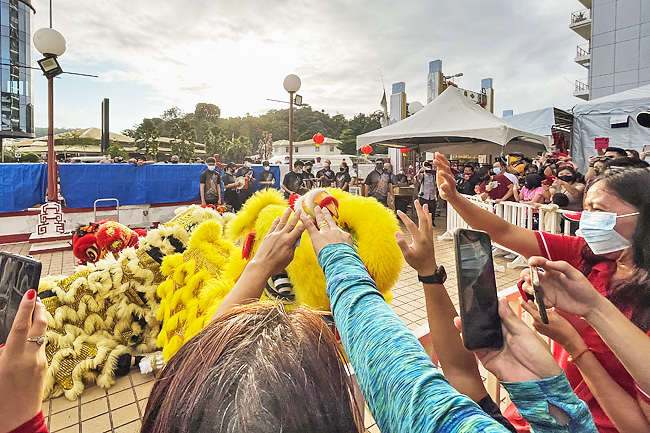Lyna Mohamad
Traditionally, the Chinese community in the Sultanate heralds the Lunar New Year with colourful celebrations at the Teng Yun Temple in the capital, a spectacle that ropes in thick crowds from all walks of life keen on catching the spectacular lion dance performance on the first morning of Chinese New Year.
This year, however, low-key celebrations were held, in adherence to measures laid out to prevent the COVID-19 spread.
The event abided by the Ministry of Health standard operating procedures (SOPs) of 75 per cent capacity.
The lion dance troupe and worshippers were allowed to pay their respect at the temple. Each lion dance troupe was limited to having 20 members in the temple to ensure social distancing – a decision made by Teng Yun Temple executive committee members.
After a small number of celebrants paid their respects to ancestors with the burning of joss paper and incense, the lion dance performances took place.




Performances were staged by the Teng Yun Temple Lion Dance troupe, Chung Hwa Middle School (CHMS) Lion Dance troupe and CHMS Alumni Lion dance troupe.
It is believed that the Lion Dance brings prosperity and good fortune, with the lion symbolising power and wisdom. Moving to the rhythm of the beating drums, clashing cymbals and gongs, the ‘lion’ imitates movements from the Chinese martial arts.
The day also saw a donation from Teng Yun Temple presented to CHMS, handed over by Teng Yun Temple Deputy Chairman Tiah Eng Beng. The CHMS Alumni also presented a donation to the Teng Yun Temple.
Each Chinese Lunar Year is represented by a cycle of 12 zodiac animals, with 2022 being the Year of the Tiger. The tiger is commonly associated with bravery, courage and strength.
Festivities for the Lunar New Year traditionally last 15 days, until the first full moon after the Spring Festival and lanterns are usually lit and released into the sky to symbolise the end of the festive period.








